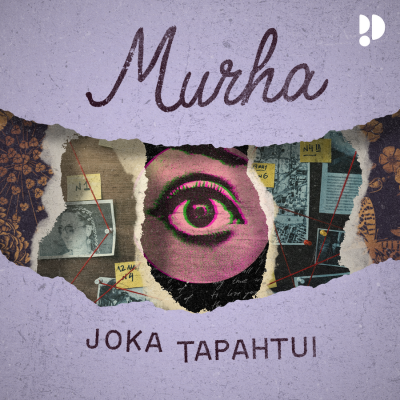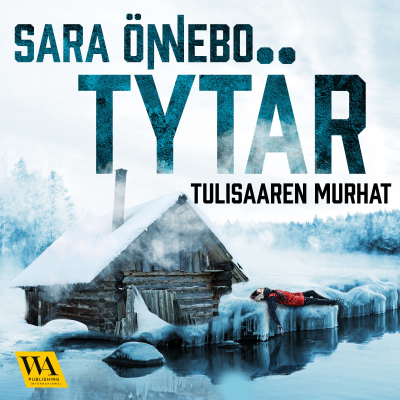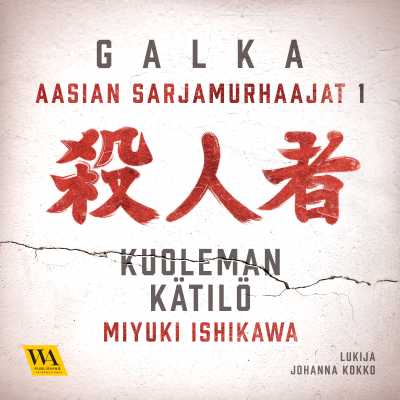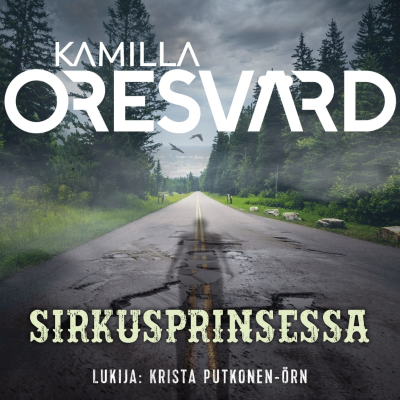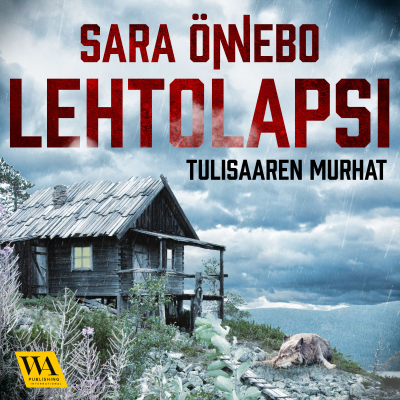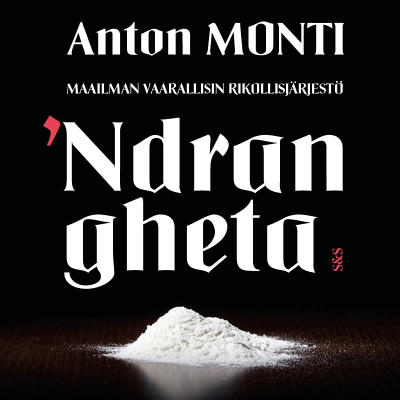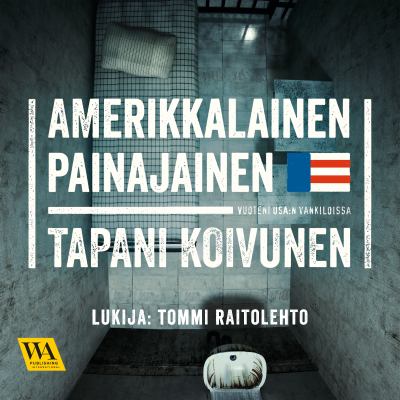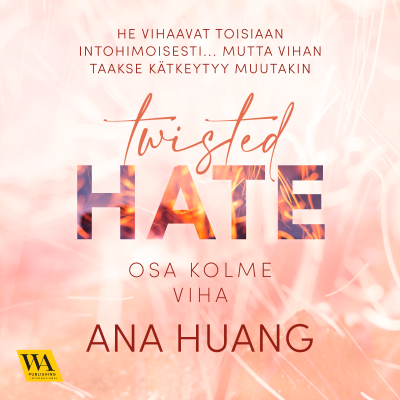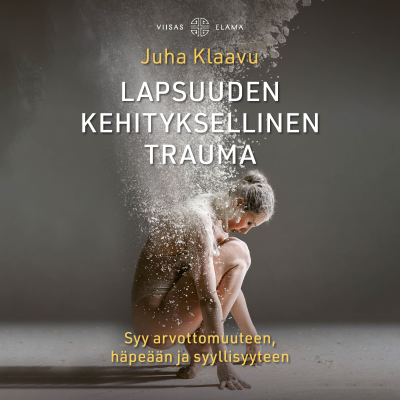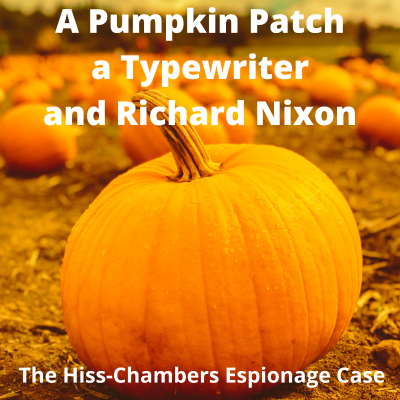
A Pumpkin Patch, a Typewriter, and Richard Nixon: The Hiss-Chambers Espionage Case
Podcast by John W. Berresford
The Hiss-Chambers case gripped the nation in 1948 and still provokes controversy. Take a deep factual dive into the story of two brilliant, fascinating men, sensational Congressional hearings, spy documents hidden in a dumbwaiter shaft and a pumpkin, the trial of the century, and the launch of Richard Nixon’s career.
90 vrk ilmainen kokeilu
Kokeilun jälkeen 19,99 € / kuukausi.Peru milloin tahansa.
Kaikki jaksot
38 jaksotThis is my final Podcast, and the shortest one — just my last thoughts after decades of study. The Hiss-Chambers Case will live on because it is important post-WWII American history, and also a great yarn, a feast for trial lawyers, and an example of the endless fight between totalitarianism and freedom, between shiny lies and messy reality. I hope it fascinated and educated you as much as it has me. Thank you for your interest in my words.
Whittaker Chambers This Podcast, the second to last, is the longest one. The Hiss-Chambers Case did not die. Many new facts were discovered, the majority of them harmful to Hiss, starting in the 1970s. The Freedom of Information Act led the US government (after a lawsuit) to produce about 40,000 pages of paper, mostly from the FBI. Hiss made the files of his defense counsel available to researchers. One wonders if he knew what was in there, some of it was so damaging to him. Most damaging in these and other files is powerful evidence that Hiss and his wife knew that the office typewriter they had had in the late 1930s was a Woodstock and that they had given it to The Catlett Kids, but they both denied such knowledge to the FBI, the Grand Jury (under oath), and even to their own ‘A List’ attorneys, William Marbury and Edward McLean. Other sources of information that opened late were the papers of Alger Hiss’s brother Donald; a recollection of a fellow convict who spoke with Hiss in prison; the observations of a psychologist who testified for Hiss at the second trial (not Dr. Binger); the memoir of a document expert whom Chester Lane hired to help Hiss’s Forgery by Typewriter argument; and even the memories of a female Bucks County, Pennsylvania, novelist who bumped into Chambers and The Ware Group during a brief residence in Washington in 1934. Finally, since the fall of the Iron Curtain, several security agencies of former Communist dictatorships have briefly opened their files, all of them damaging to Hiss. No wonder this second to last Podcast is the longest one. FURTHER RESEARCH The FOIA Documents are best summarized in Weinstein at 300-14 (“The Woodstock Cover-Up” — a coverup by the Hisses, not the FBI), 399-435 (“Rumors and Whispers: The Pursuit of Evidence”), 625-30 (“The Motion for a New Trial”), 632-34 (“The ‘Faked’ or ‘Substituted’ Woodstock: Hover and the FBI”), and 641-45 (“The Double Agent: Horace Schmahl, Mystery Man”). Other post-trials evidence is recounted in Gary Wills’ “Lead Time: A Journalist’s Education” at 61-62 (Doubleday 1983); Elinor Langer, “Josephine Herbst” at 151-58, 268-76 (Northeastern Univ. Press 1984); and Donald B. Doud,” Witness to Forgery: Memoir of a Forensic Document Examiner” at 34-66 (Orchard Knoll Publishers 2009). The best summaries of the documents from ‘behind the Iron Curtain’ are the chapter titled “Alger Hiss:Case Closed” in John Earl Haynes, Harvey Klehr, & Alexander Vassiliev, “Spies: The Rise & Fall of the KGB in America” at 1-31 (Yale University Press 2009); and Eduard Mark, “In Re Alger Hiss: A Final Verdict from the Archives of the KGB,” 1 Journal of Cold War Studies at 26 (2009). Hiss’s briefs and some supporting documents in his last run at the courts (in the 1970s, claiming prosecutorial misconduct) are reproduced in Edith Tiger (Ed.), “In Re Alger Hiss” (two volumes) (Farrar Straus Giroux 1979) (Chambers’ handwritten account of his homosexual activities, which he gave to the FBI, is in Volume I at 258-66.). For my skeptical reaction to some of Hiss’s claims, see pages 221-28 of my paper “How Alger Hiss Was Framed: The Latest Theory,” available at https://papers.ssrn.com/sol3/papers.cfm?abstract_id=3868165 [https://papers.ssrn.com/sol3/papers.cfm?abstract_id=3868165]. Questions: Is there now reasonable doubt that Hiss was guilty of the offenses charged, and of a good deal more? Or am I missing something? Certainly, if Hiss is in fact innocent, he is one of the most wronged persons in our history! If The Prosecution in Hiss trials did not play fair, should any tears be shed for Hiss if he was still up to his neck in spying for the Soviet Union and setting the stage for Joe McCarthy? What motive would a female Bucks County novelist have to lie and place Chambers and Hiss together in The Ware Group in Washington in the mid-30s? Isn’t she as unlikely to be taking orders from J. Edgar Hoover as Chambers’ best friend Professor Meyer Schapiro, a Jewish socialist art history professor at Columbia? In light of the fact that all the typewriter experts Hiss’s counsel hired reached the same conclusion as the FBI expert Feehan, is it likely that Hiss knew he was lying all the years he was claiming Forgery by Typewriter? Or might he have forgotten and convinced himself that he was actually innocent? Have you never known anyone who had such favorable delusions about his or her bad conduct long ago? Consider all the people who have to be lying, all the experts who have to be wrong, and all the documents that have to be forged and planted in dozens of different places in different continents over several decades if Hiss is innocent. How likely is that?
As Chambers wrote to his friend Bill Buckley, most of us think the story of Oedipus ends when he learns he married his own mother and puts his eyes out. In fact, however, Oedipus lived for years afterwards. After the trials, Chambers lived for 10 years and Hiss for 45. Neither escaped The Case, nor did their wives and children. (Add this, by the way, to all the reasons that committing treason is a bad idea.). Each man wrote a book. Chambers’ became a best-seller, a major American autobiography, and a sacred text of the post-WWII right. Hiss’s book sank like a stone, as did another he wrote in the mid-1980s. Chambers tried to stay out of the public eye. Hiss tried to stay in it, but failed to establish either his innocence or the dimensions of the shape-shifting conspiracy that had framed him. This Podcast recounts the tragic post-court life of each of our protagonists. FURTHER RESEARCH Episode 36: Chambers’ autobiography is “Witness,” most recently published by Regnery Gateway in 2014. He was working on a huge, never finished book (working title “The Third Rome”) when he died. Associated essays of his were published by Random House in 1964 under the title “Cold Friday” — the name of a field on his farm. His articles for The National Review (amounting to less than 85 pages) were published by that magazine in “The Whittaker Chambers Reader: His Complete National Review Writings 1957-59” in 2014; these and his earlier short pieces appear in “Ghosts on the Roof: Selected Essays,” edited by Terry Teachout and published by Transaction in 1996. Two books of Chambers’ correspondence have been printed: “Odyssey of a Friend: Letters to William F. Buckley, Jr., 1954-1961” (Regnery Gateway 1987); and “Notes from the Underground: The Whittaker Chambers-Ralph de Toledano Letters 1949-60,” published in 1997 by Regnery Gateway. Mr. de Toledano covered the trials for Newsweek Magazine and became a prominent conservative writer. If you’re interested in what Chambers did and thought in his last years, the best of the foregoing works is (in my opinion) the Chambers-Buckley correspondence. Hiss’s memoir, “In the Court of Public Opinion” (Knopf 1957), draws heavily on his Petition for a New Trial on Grounds of Newly Discovered Evidence. His late-in-life autobiography, “Recollections of a Life,” was published by Seaver in 1988. It is as dry as his first book. Hiss’s son, Anthony, maybe best known as The New Yorker’s railroad correspondent under the pseudonym E.M. Frimbo, wrote about himself and his father in “Laughing Last” (Houghton Mifflin 1977) when things were looking up for his dad. After the verdict of history had turned the other way, the young Hiss produced “The View from Alger’s Window: A Son’s Memoir” (Houghton Mifflin 1999). It concentrates on the correspondence he shared with his imprisoned father. The New York Times reviewer described the latter book as “deeply troubling,” “a painful story of the family as a factory of denial.”“Family Ties,” by Ann Douglas, https://archive.nytimes.com/www.nytimes.com/books/99/06/27/reviews/990627.27dougl.html [https://archive.nytimes.com/www.nytimes.com/books/99/06/27/reviews/990627.27dougl.html]. That The Times would publish such a review indicates how much, even among northeastern liberals, the verdict had solidified against Hiss and for Chambers. More about the two protagonists’ post-trial lives can be found in Professor Weinstein’s book “Perjury” at pages 550-72 (chapter titled “Alger and Whittaker: The Vigil and the Death Watch”); and at pages 444-514 of the Sam Tanenhaus biography “Whittaker Chambers.” Questions: Which protagonist suffered more after the trials — the imprisoned Hiss or the ostracized Chambers? Do you have a hunch that one or both of them overcame gloom and died with a somewhat satisfied, “something ventured, something gained” feeling? Of the wives and children, only one (Hiss’s son) capitalized on The Case. If you had been one of the others, would you have been tempted to follow Tony’s path? If Hiss was guilty, why didn’t he avoid the limelight like Chambers did? And, when his son got interested in The Case, why didn’t Hiss say to him “Son, this has taken over my life, but it doesn’t have to mess up yours. I’ve got some years to live and powerful friends on my side; you just get on with your own existence and leave this to us.” Why would he let his son take up a cause that Hiss knew was a lie and would likely someday be exposed as such, making his son look pitiful?
Several people have told me that, of my 38 episodes, this is their favorite. See if you agree. It is all about the question Hiss could never answer: how, if Hiss is innocent, did the 64 Typed Spy Documents get typed on his home typewriter. You may recall that Hiss first told The Grand Jury that Chambers broke into his house in 1938 and typed them on it himself when no one was looking. That didn’t work. Second, Hiss told the jury at the second trial that Hiss gave the Typewriter to the Catlett Kids in late 1937; they put it in the back room where they had their non-stop dance party; then Chambers found it there and typed up The Typed Spy Documents himself on it as the conga line snaked past. That didn’t convince, either. Third — and this is the subject of this Podcast — in a Motion for a New Trial on Grounds of Newly Discovered Evidence, Hiss’ new lawyer speculated that Chambers in 1948 had made a fake typewriter, which typed just like The Hiss Home Typewriter, and had typed up The Spy Documents on it; then Chambers found where the real Hiss Typewriter was (in the nightwatchman’s home, you remember), stole it and planted his fake there, and waited for someone to find the fake and for everyone to assume it was the real Hiss Home Typewriter. Quite a frame-up, if true. But did that really happen? Is it even plausible? Podcast #35 explores this theory, which Hiss stuck to till his dying day (with numerous variations as each old one failed). FURTHER RESEARCH The best dissection of The Forgery by Typewriter Theory is Chapter 2 (titled “Chambers”) in “Ex-Communist Witnesses:Four Studies in Fact Finding” by Professor Herbert L. Packer of Stanford University Law School (Stanford University Press 1962) at 21-51. Others are Cornell/Georgetown/Minnesota Law School Professor Irving Younger’s article “Was Alger Hiss Guilty?” in Commentary Magazine’s August 1975 issue, available at https://www.commentary.org/articles/irving-younger/was-alger-hiss-guilty-2/ [https://www.commentary.org/articles/irving-younger/was-alger-hiss-guilty-2/]; and the Appendix to professor Weinstein’s book, titled “‘Forgery by Typewriter’: The Pursuit of Conspiracy, 1948-97,” at pages 624-30, 632-34, 645-47. The version of Alistair Cooke’s book (“A Generation on Trial:U.S.A. v. Alger Hiss”) that was published in 1952 has a few new pages at the end, 347-54, describing Hiss’s Motion for a New Trial and the Court hearing about it. Judge Goddard presided, and Cooke notes (at 348) that the audience included “leisured and unidentified old ladies who appeared at all Hiss hearings with the ritual fatalism of the annual pilgrims to Valentino’s grave.” Cooke writes (at 348) that “several excellent lawyers were dumbfounded by the claims that the defense now put forward.” After describing Judge Goddard’s dismissal of those claims, Cooke ends his book with the following words. “Four years had passed since the names of Hiss and Chambers shook the nation. Now there was another Presidential campaign, and the Democrats were in full fling at their convention in Chicago. Judge Goddard’s word, perhaps the last, about Hiss was lucky to earn a few lines at the bottom of the inside pages of newspapers. In most it earned none. Hiss had passed into shame and into history.” Here is my list of the people who, Hiss defenders have speculated over the decades, masterminded or participated in the framing of Hiss (in most cases involving forgery by typewriter): Whittaker and Esther Chambers, J. Edgar Hoover and the FBI, Ambassador William C. Bullitt, Jr., Richard and Pat Nixon, the Democratic financier and Presidential advisor Bernard Baruch, President Truman’s Secretary of State James F. Byrnes, the Dulles Brothers, supporters of the Chinese anti-communist dictator Chaing Kai-Shek, a Nazi sympathizer who owned a typewriter store in New York City, the U.S. Army Counter Intelligence Corps, and a private detective named Horace Schmahl. If you are interested in the broader question of why people believe highly implausible stories, I recommend Michael Shermer’s book “Why People Believe Weird Things: Pseudoscience, Superstition, and Other Confusions of Our Time” (St. Martin’s Griffin 2002); and a delightful article by the Brandeis University Professor Jacob Cohen, “Will We Never Be Free of the Kennedy Assassination?,” published in the December 2013 issue of Commentary Magazine and available at https://www.commentary.org/articles/jacob-cohen/will-we-never-be-free-of-the-kennedy-assassination/ [https://www.commentary.org/articles/jacob-cohen/will-we-never-be-free-of-the-kennedy-assassination/]. Questions: Here are two questions I have asked myself for years but never answered satisfactorily. Can you help me? (1) In his Motion for a New Trial, Hiss claimed that Chambers did the forgery all by himself, or with the help of Communist friends. This seems plainly ridiculous. Chambers had neither the time, the tools, nor the talents to forge a typewriter and, by 1948, no Communist friends to help him. My question: why was it only years later that Hiss claimed that Hoover and the FBI had committed the forgery? The FBI was obviously the only organization in the US that even arguably had the necessary time, tools, and talents. What prevented Hiss from aiming, from the start, at such an obvious target? (2). Hiss publicized his Forgery by Typewriter theories for decades, and his supporters have carried the torch in the decades after his death. They are articulate people, they have occasionally had generous funding, and they know lots people in the nation’s media who would love another story of an innocent gentleman framed as a Commie the early Cold War years. But if you Google “Famous Conspiracy Theories” or “Top 25 Conspiracy Theories of All Time,” you will not find Hiss’s Forgery by Typewriter Theory. Why? Why has Hiss’s conspiracy theory not achieved the popularity of the theories about the assassinations of JFK and RFK, or of the alleged landings at Roswell and the alleged non-landings on the Moon? Is his theory too implausible or too complicated for a large audience, and/or is Hiss too cold a fish to be sympathetic?
Alger Hiss is taken to prison Alger Hiss’s conviction — technically for perjury, but effectively for treason — was a major event. It was a disaster for The Establishment, especially liberal Democrats, and vindication for Republicans and populist Democrats. The 18 month labyrinth of HUAC hearings, depositions in Hiss’s libel suit, grand jury proceedings, and two criminal trials were the long, long overture to the so-called McCarthy Era. Senator McCarthy, in fact, gave his famous “I have a list . . .” speech just weeks after Hiss’s conviction. This Podcast gives an overview of the many and complex reactions to the guilty verdict. Everyone, it seems, accepted the factual correctness of the verdict. But many liberals could not help making up excuses for Hiss, or damning Chambers for being fat and melodramatic. And many conservatives and populists could not help painting all liberals and Harvard graduates with the black pitch of Hiss’s treason. Most interesting and encouraging to me, a significant number of liberals and Democrats were sufficiently mature and morally alive to engage in genuine introspection and self-criticism, to admit they had ‘blown it big time’ when it came to Soviet traitors in our midst, and to resolve to fashion a liberal anti-communism that was just as vigorous as what Republican conservatives had been offering for decades. FURTHER RESEARCH The McCarthy Era, although sparked by this Case, is an oceanic subject beyond the scope of these Podcasts. If you want to read about it, among the best conservative books are George H. Nash’s “The Conservative Intellectual Movement in America Since 1945” (Basic Books 1976), esp. 84-130; and Richard Gid Powers’ “Not Without Honor: The History of American Anticommunism” (Free Press 1995), esp. 191-272.See also Professor Harvey Klehr’s essay “Setting the Record Straight on Joe McCarthy,” https://archives.frontpagemag.com/fpm/setting-record-joe-mccarthy-straight-harvey-klehr/ [https://archives.frontpagemag.com/fpm/setting-record-joe-mccarthy-straight-harvey-klehr/]. Among the far more numerous, totally anti-McCarthy books are David Caute’s “The Great Fear:The Anti-Communist Purge Under Truman and Eisenhower” (Touchstone 1979), esp. 56-62; Fred J. Cook’s “The Nightmare Decade:The Life and Times of Senator Joe McCarthy” (Random House 1971); Victor Navasky’s “Naming Names” (Viking 1980) (especially the early pages); I.F. Stone’s “The Truman Era: 1945-52” (Little Brown 1953) (Stone was himself a secret agent of the Soviet Union); and James A Weschler’s “The Age of Suspicion” (Random House 1953). I must note that it was a stroke of genius for the minimizers of Communist treason to name the era after anti-Communism’s most irresponsible big name. This is as if racists had succeeded in labeling the civil rights movement The Al Sharpton Movement. Concerning the impact of the Hiss verdict in particular, Dean Acheson, in his autobiography “Present at the Creation: My Years at the State Department” (Norton 1987), titles his pertinent chapter (at 354) “The Attack of the Primitives Begins.” Alistair Cooke (at 340) also saw nothing good coming from Hiss’s conviction. A more mature view, at page 267 of Walter Goodman’s “The Committee:The Extraordinary Career of the House Committee on Un-American Activities” (Farrar, Straus & Giroux 1968), is that the Hiss-Chambers Case “whip[ped] up a storm which did not last long but left ruins in its wake.” Other more realistic analyses of the Case’s impact on America are in Weinstein at 529-47 (chapter titled “Cold War Iconography I: Alger Hiss as Myth and Symbol”); the best single essay on this Case in my opinion, Leslie Fiedler’s “Hiss, Chambers, and the Age of Innocence” at 3-24 of his “An End to Innocence: Essays on Culture and Politics” (Beacon Press 1955) and Diana Trilling’s essay “A Memorandum on the Hiss Case,” first published in The Partisan Review of May-June 1950 and re-published at 27-48 of Patrick J. Swan’s anthology of essays on this Case, “Alger Hiss, Whittaker Chambers, and the Schism in the American Soul” (ISI Books 2003). The latter two essays I highly recommend. Questions: If you had been adult when Hiss was convicted, what would have been your reaction to his conviction? ‘Justice at long last,’ ‘a miscarriage of justice,’ ‘guilty but a fair trial was impossible,’ ‘technically guilty but with an excuse,’ or something else? Would your reaction have been purely emotional/political/tribal, or would you have cited one or more facts to support your reaction? Would you have been totally certain that your reaction was the right one, or would you have harbored some doubts?
90 vrk ilmainen kokeilu
Kokeilun jälkeen 19,99 € / kuukausi.Peru milloin tahansa.
Podimon podcastit
Mainoksista vapaa
Maksuttomat podcastit
Äänikirjat
100 tuntia / kk




